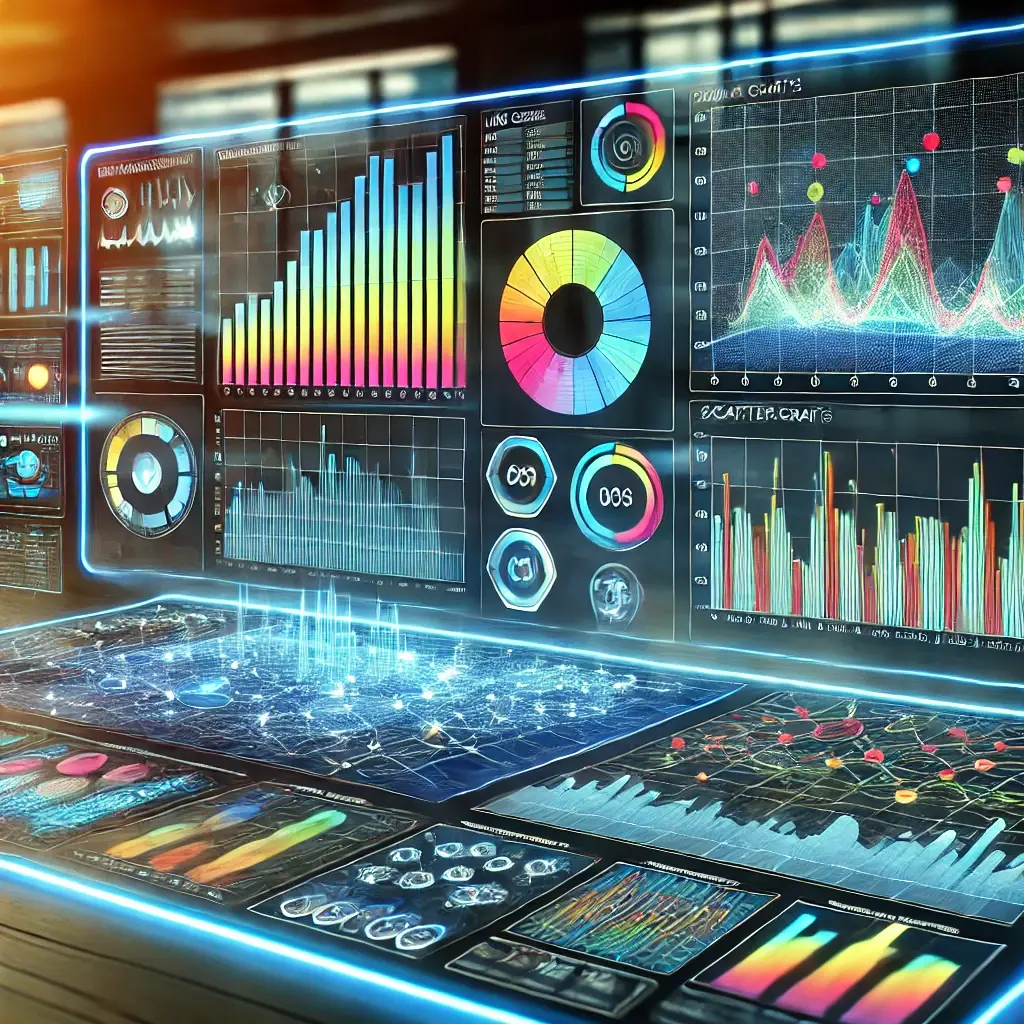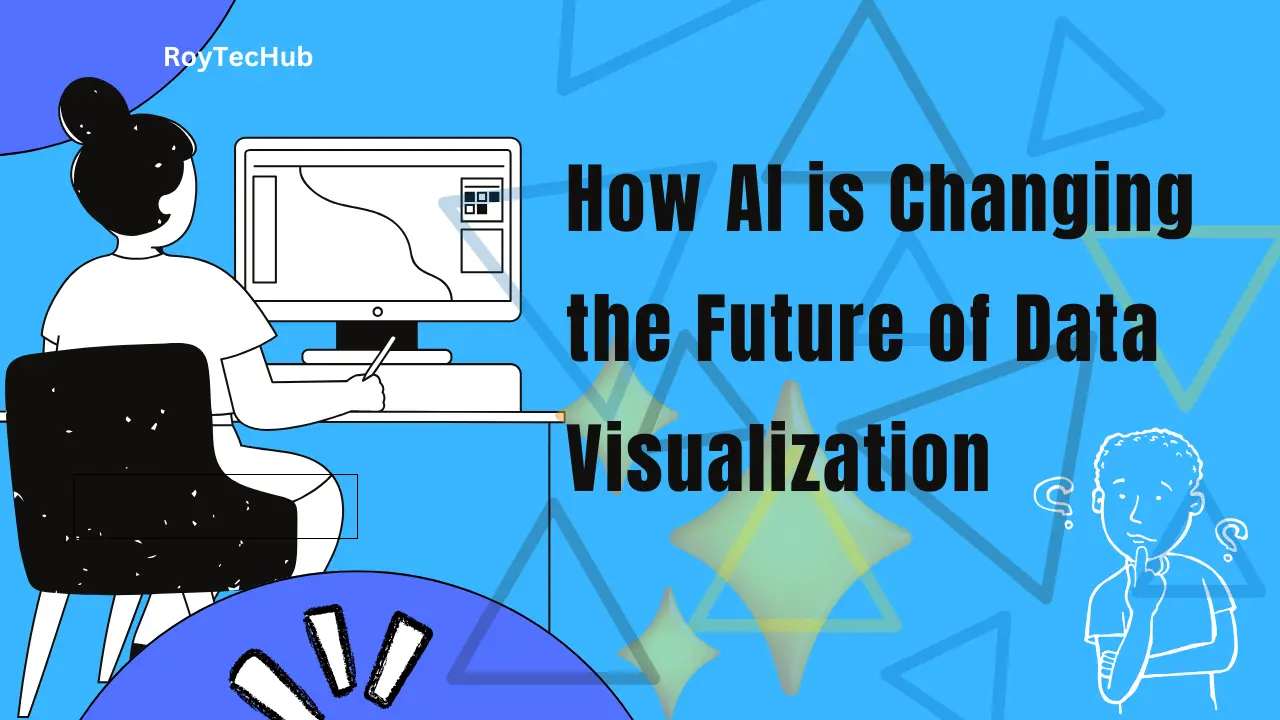Data visualization remained essential to comprehend complex data collections from the beginning. AI tools help researchers simplify data assessment together with interpretation and meaningful data presentation to improve business decision-making in various industrial sectors.
Table of Contents
ToggleThis article investigates artificial intelligence-powered changes to data visualization technology including its usage areas and advantages as well as future challenges.
How AI is Revolutionizing Data Visualization

1. Automated Data Analysis
The major shift introduced by AI to data visualization involves automation functions. The combination of artificial intelligence with tools enables automatic data processing so users receive visual analysis outputs without defining set parameters first.
The AI functions built into Google Data Studio automatically identify optimal visual display solutions based on the input data.
The AI-powered framework Sisense enables users to request visual outputs by speaking in natural English through its natural language processing capabilities.
2. Intelligent Data Storytelling
The fundamental element of visualization depends on data storytelling because large numbers usually prove challenging to analyze without proper interpretation.
The data-driven narrative structure that AI generates creates new insights from the provided information.
Automatic explanations appear beside visualizations through two tools named Narrative Science and Tableau’s Ask Data feature which harness AI capabilities.
You may also read: What are common Visual Big Data Analysis Technique
These tools enable businesses to comprehend the situational meaning of numbers so their derived insights become more practical.
3. Real-Time Data Processing and Visualization
The way AI visualizes data in real time provides excellent benefits to industries operating in finance banking along with healthcare and cybersecurity.
Financial organizations employ AI dashboard systems to track stock market indicators throughout the real time period.
The use of AI enables users to detect meaningful changes while it generates investment advice and makes future trend predictions based on past records.
Healthcare facilities benefit from visualization tools powered by AI that monitor disease spread which provides instant information about infectious zones and disease progression as it happens.
Timely decisions become possible because these insights are provided to healthcare authorities.
4. Predictive and Prescriptive Analytics
Machine learning programs inspect previous performance records which enables companies to create accurate predictions about upcoming market conditions.
The prediction of customer buying behavior depends on AI-based visualization tools that e-commerce companies implement.
Previous purchasing records enable AI to produce heatmaps that provide information about peak shopping hours and customer-preferred items together with their purchasing preferences.
AI is used by supply chain companies to identify upcoming operational interruptions. AI visualization analytics examines weather data alongside transportation records and market requirements which allows them to recommend the top supply chain approaches.
5. Personalized and Adaptive Visualizations
AI-driven personalization displays only important insights to users which are designed from their previous actions together with their personal preferences.
These applications find their main use within business intelligence systems alongside marketing strategies.
Netflix employs AI systems to provide personalized dashboard recommendations to its users. Users can access unique content suggestions through the platform after its analysis of their viewing behavior and interaction metrics.
The AI tools found in HubSpot marketing solutions study user behavior patterns to show only the metrics and KPIs that align best with their operations.
6. Natural Language Processing (NLP) in Visualization
The combination of artificial intelligence with natural language processing allows users to gain easier access to more interactive data visualization.
Users gain visual feedback through the platform after entering their questions to retrieve insights automatically.
Through Microsoft Power BI’s Q&A capability users can inquire about top-selling products from the previous quarter by employing either written or verbal questions. The application instantly produces a suitable chart or graph from the input information.
You may also read: Top Data Visualization Mistakes and How to Avoid Them
Real-World Examples of AI-Powered Data Visualization

1. Google Analytics 4 (GA4)
AI functionality in Google Analytics 4 enables better visual presentation of data to marketers who work in digital platforms.
Users gain access to predictive data measurements which include customer acquisition probabilities in addition to customer maintenance probabilities alongside sales revenue forecasts.
Business professionals can utilize prediction analytics to drive their advertising decisions while maximizing their budget distribution.
2. IBM Watson Analytics
Data analysis and visualization methods get automated through AI systems within IBM Watson Analytics.
Users feed their data through the system while Watson provides optimal visualization methods and points out essential findings as well as automatically creating reports.
3. Tableau with AI-Powered Ask Data
Users can ask data questions naturally to Tableau through its Ask Data feature for data interaction. The AI-powered interface produces instant analytical results which business staff can access effortlessly through any necessary expertise.
4. AI-Powered Stock Market Dashboards
AI visualizations on Bloomberg Terminal platforms can monitor stock market activity as it unfolds. Artificial Intelligence system enables traders to discover emerging market trends by assessing investor opinions along with generating practical trading recommendations.
Benefits of AI in Data Visualization
Enhanced Accuracy: AI reduces human errors in data analysis, providing more precise insights.
Improved Efficiency: AI automates complex data processing tasks, saving time and resources.
Better Decision-Making: Predictive analytics help businesses make informed strategic decisions.
Greater Accessibility: NLP-powered visualization tools make data accessible to non-technical users.
Personalized Insights: AI tailors visualizations based on user preferences and behavior.
Challenges and Limitations
Despite its advantages, AI-powered data visualization comes with challenges:
Data Quality Issues: AI models depend on high-quality data. Poor data can lead to inaccurate insights.
Bias in AI Algorithms: If AI models are trained on biased datasets, they can produce misleading visualizations.
Complexity in Implementation: Deploying AI-driven visualization tools requires technical expertise.
Privacy Concerns: AI-powered analytics may raise concerns about data security and user privacy.
Conclusion
Data visualization is ready to be revolutionized with AI automation. Artificial intelligence and machine learning are hot topics in visualisation and analytics today.
There will always be challenges, but ongoing evolution in AI will help us make data easier and quicker to understand.
What are your thoughts on AI-powered data visualization? Share your opinions in the comments below.







